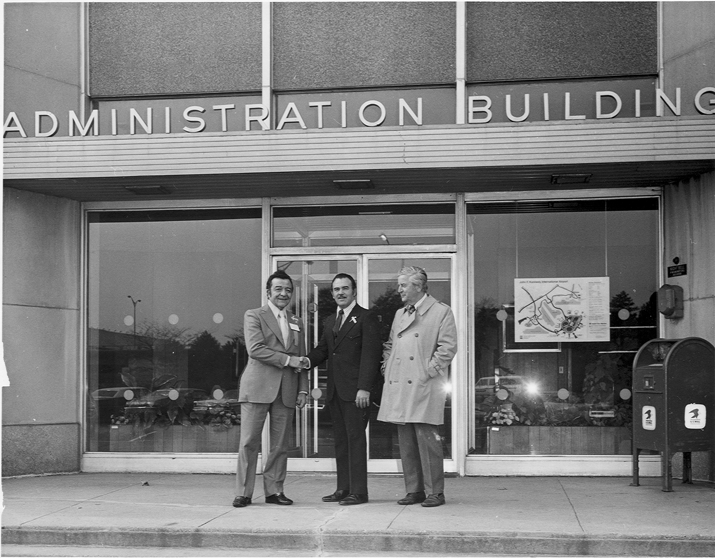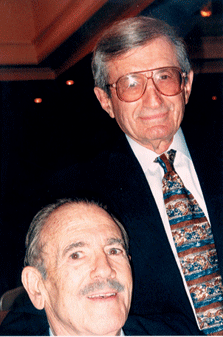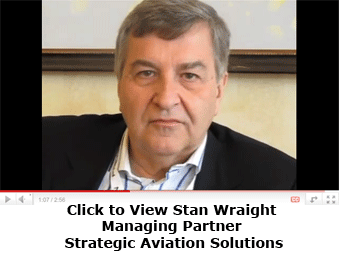Remembering
Morris Sloane

Morris Sloane with Sky Deli-Bldg 110 founder Greg Poulos
at Building 148 at JFK. |
 Morris
Sloane died May 24, 2010 in Yonkers, New York at the age of 87. Morris
Sloane died May 24, 2010 in Yonkers, New York at the age of 87.
Morris was General Manager of John F. Kennedy
International Airport from 1968-1973, back when PANY NJ offices were there
in Building 148.
After Ike Dornfeld (pictured here with
Morris in June 1998 at JFK’s 50th anniversary celebrations)
took over JFK, Morris moved into the World Trade Center where he served
as Director of Aviation Operations under several Port Aviation Directors,
including CB Pattarini and later, Bob Aaronson.
By the time he retired (my friend, the old
Ozark Airlines Station Manager at LGA, Dennis Wrynn, used to say Morris
looked like the fictional detective Boston Blackie—both had pencil-thin
moustaches), Port Authority thought enough of him to rename their first
construction (1948) at Idlewild (or IDL, the old name for JFK) Building
141 in honor of Mr. Sloane.
Morris Sloane was also awarded the Port
Authority’s Distinguished Service Medal in 1990 for his “creativity
and superb managerial abilities in conceiving and completing bold public
projects” throughout his career.
When we talked, Morris always mentioned
and credited his Alma-Mater, The Wharton School, where he studied finance.
Morris was a guy who believed in making
lots of money and always watching the bottom line.
I remember once sitting together aboard
that beautifully restored JU 52-3M that Lufthansa flies around, taking
people on joy rides ‘back in time’ in a 1930s passenger plane.
The “Tante-Ju” took off from
the old Eastern Airlines Cargo Hangar Nine at JFK (interestingly, where
the new Lufthansa Cargo Building now stands at the airport), and away
we went, off into the wild blue yonder.
Our Lufthansa JU-52 flight took us across
Queens, New York over to New Jersey and then above the George Washington
Bridge, finally coming down the Hudson River before returning to JFK.
As we flew past The World Trade Center,
Morris leaned over, looked out the window and thought out loud:
“I wonder if those contracts have
been signed yet.”
It’s funny what you remember about
incidences in your life.
But ever since that day, I have often thought
of Morris Sloane’s remark as we flew past WTC at about the the 65th
floor—the same level where the PANY NJ Aviation Department was located.
Those words echoed in my mind on that horrible
day the World Trade Center was taken from us forever.
Keep ‘em flying, Morris.
Geoffrey
|




